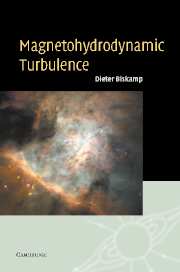Book contents
- Frontmatter
- Contents
- Preface
- 1 Introduction
- 2 Magnetohydrodynamics
- 3 Transition to turbulence
- 4 Macroscopic turbulence theory
- 5 Spectral properties and phenomenology
- 6 Two-point-closure theory
- 7 Intermittency
- 8 Two-dimensional turbulence
- 9 Compressible turbulence and turbulent convection
- 10 Turbulence in the solar wind
- 11 Turbulence in accretion disks
- 12 Interstellar turbulence
- Outlook
- References
- Index
1 - Introduction
Published online by Cambridge University Press: 17 August 2009
- Frontmatter
- Contents
- Preface
- 1 Introduction
- 2 Magnetohydrodynamics
- 3 Transition to turbulence
- 4 Macroscopic turbulence theory
- 5 Spectral properties and phenomenology
- 6 Two-point-closure theory
- 7 Intermittency
- 8 Two-dimensional turbulence
- 9 Compressible turbulence and turbulent convection
- 10 Turbulence in the solar wind
- 11 Turbulence in accretion disks
- 12 Interstellar turbulence
- Outlook
- References
- Index
Summary
Turbulence is a ubiquitous phenomenon. Wherever fluids are set into motion turbulence tends to develop, as everyday experience shows us. When the fluid is electrically conducting, the turbulent motions are accompanied by magnetic-field fluctuations. However, conducting fluids are rare in our terrestrial world, where electrical conductors are usually solid. One of the rare examples of a fast-moving conducting fluid, which has been of some practical importance and concern and to which authors of theoretical studies sometimes referred, is, or better, was the flow of liquid sodium in the cooling ducts of a fast-breeder reactor. It is therefore not surprising that, in contrast to the broad scientific and technical literature on ordinary, i.e., hydrodynamic, turbulence, magnetic turbulence has not received much attention.
The most natural conducting fluid is an ionized gas, called a plasma. It is true that laboratory plasmas, which are confined by strong magnetic fields, notably in nuclear-fusion research, exhibit little dynamics, except in short disruptive pulses. Only the reversed-field pinch, a toroidal plasma discharge of relatively high plasma pressure, exhibits continuous magnetic activity, such that it is sometimes considered more as a convenient device for studying magnetic turbulence rather than as a particularly promising approach to controlled nuclear fusion.
- Type
- Chapter
- Information
- Magnetohydrodynamic Turbulence , pp. 1 - 9Publisher: Cambridge University PressPrint publication year: 2003



